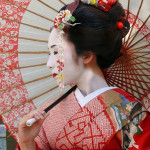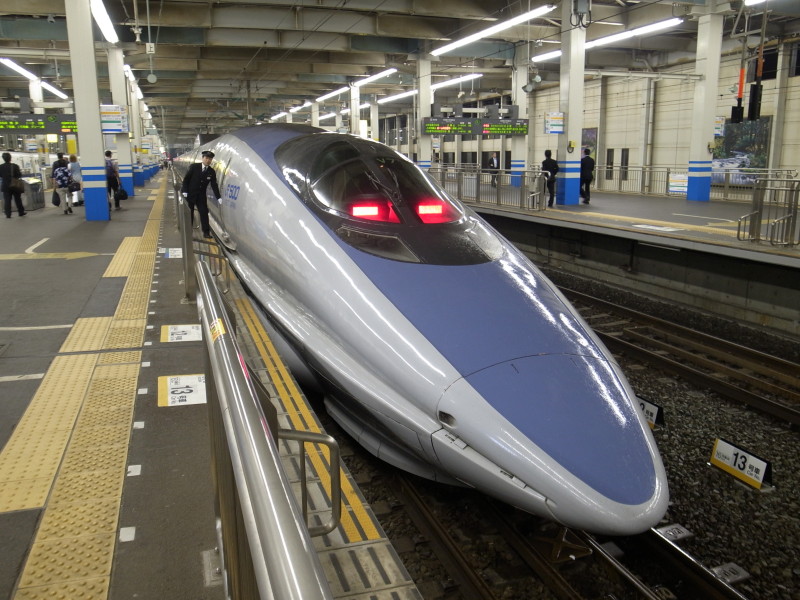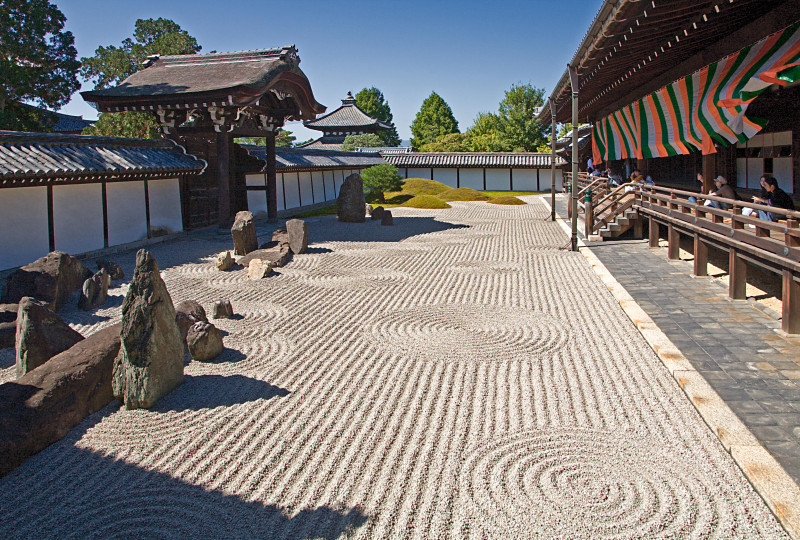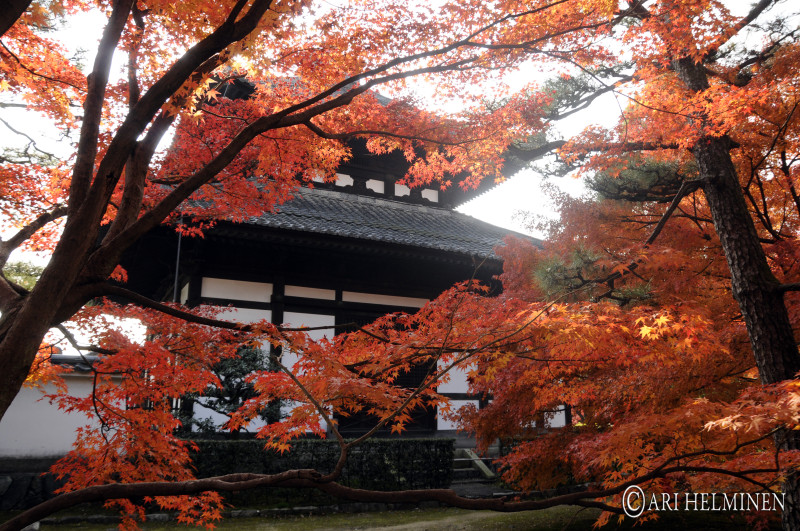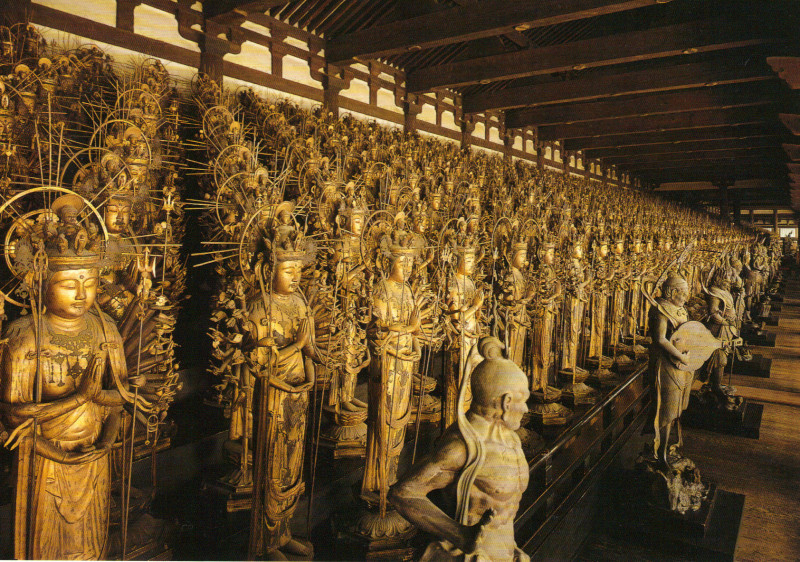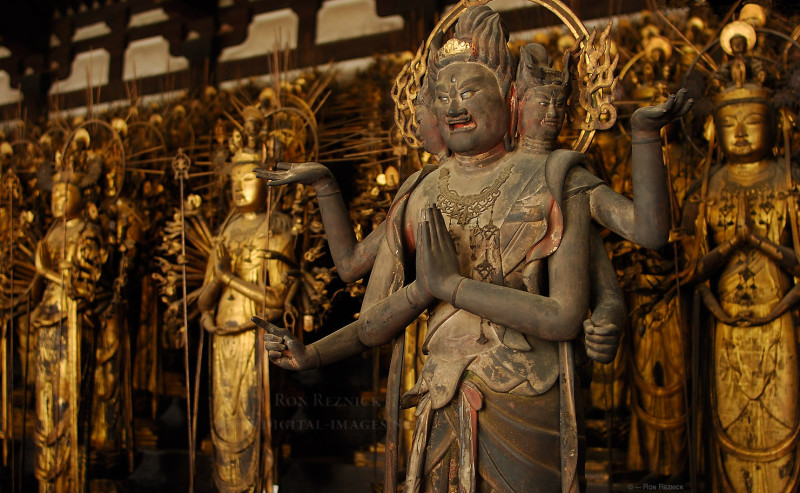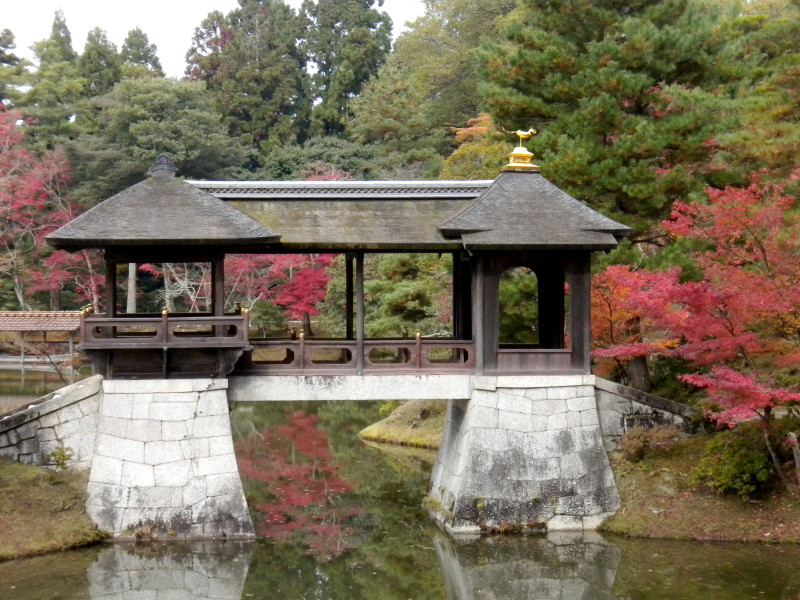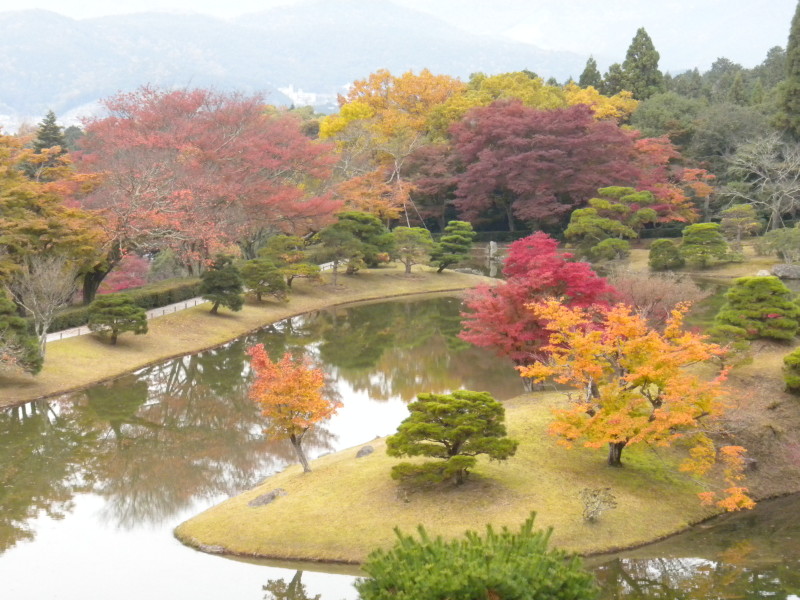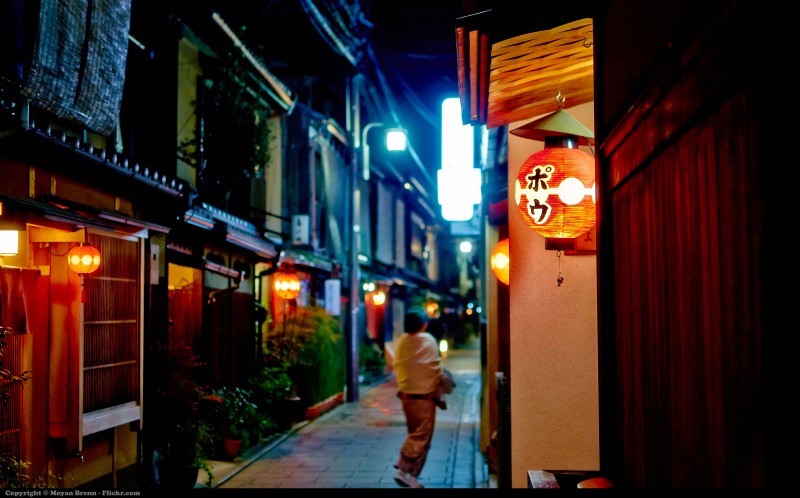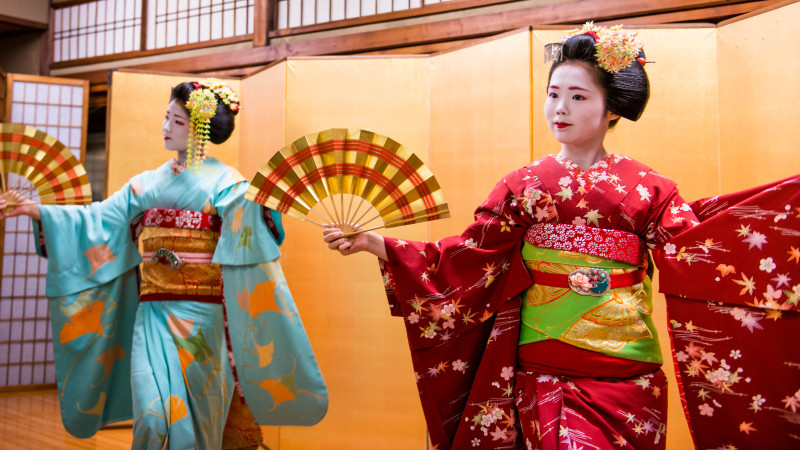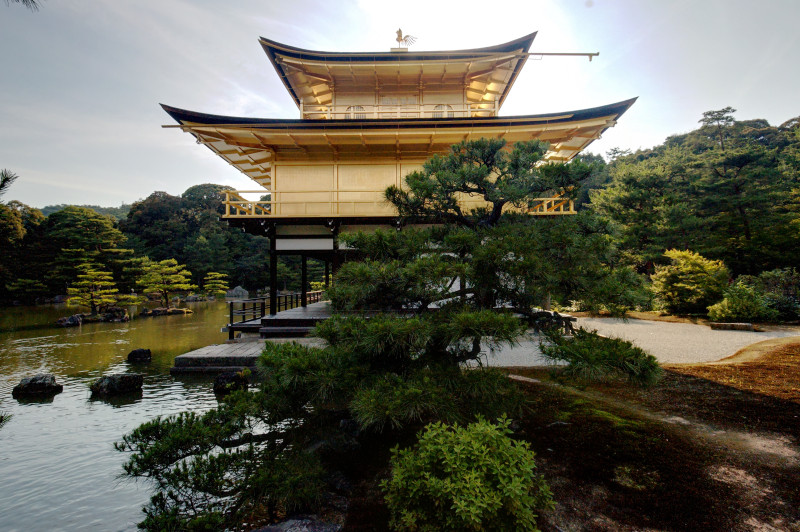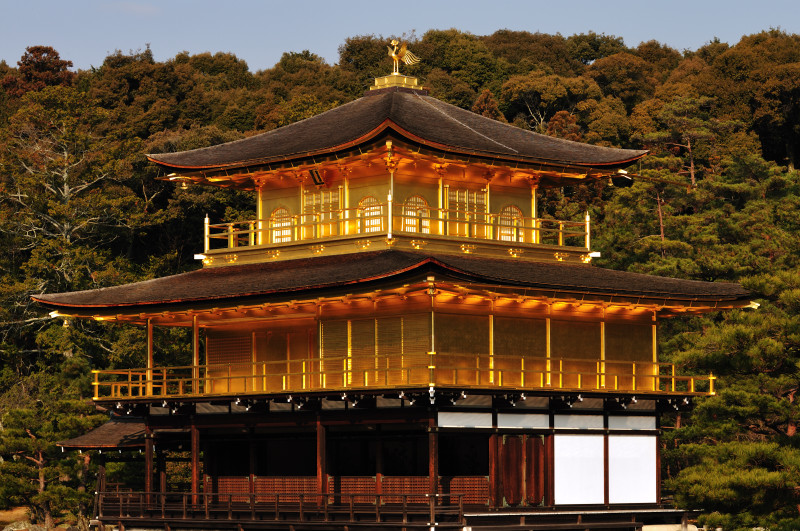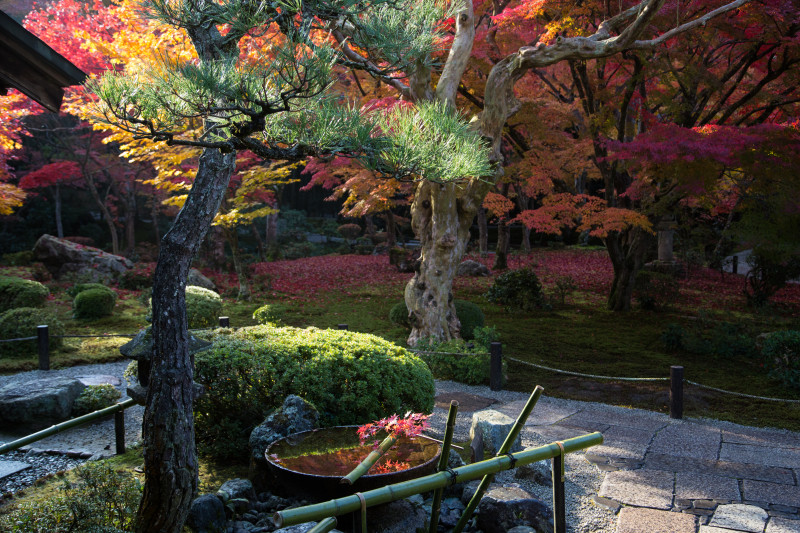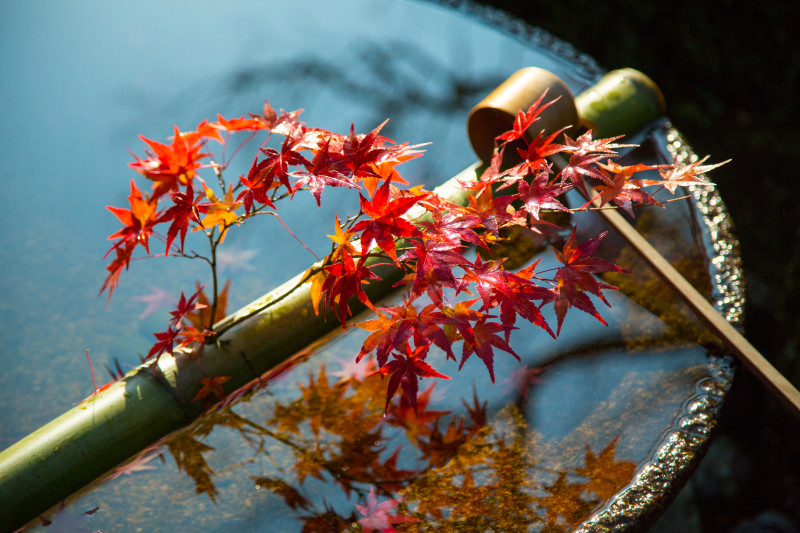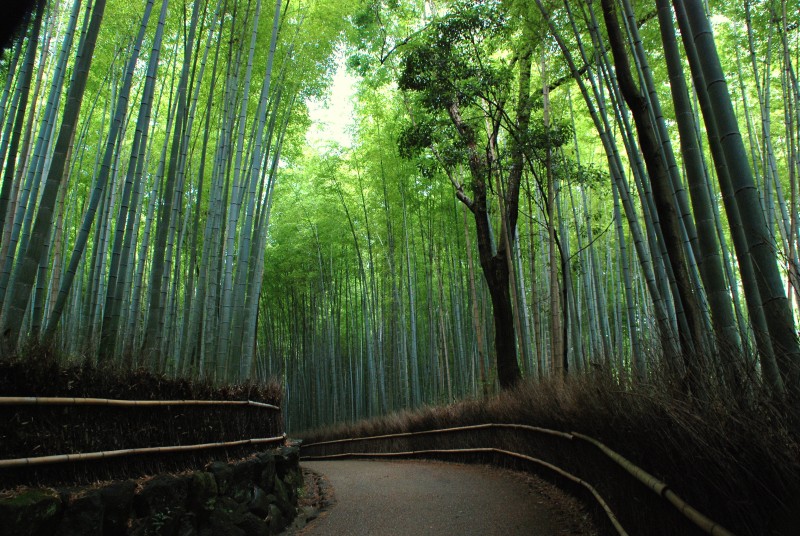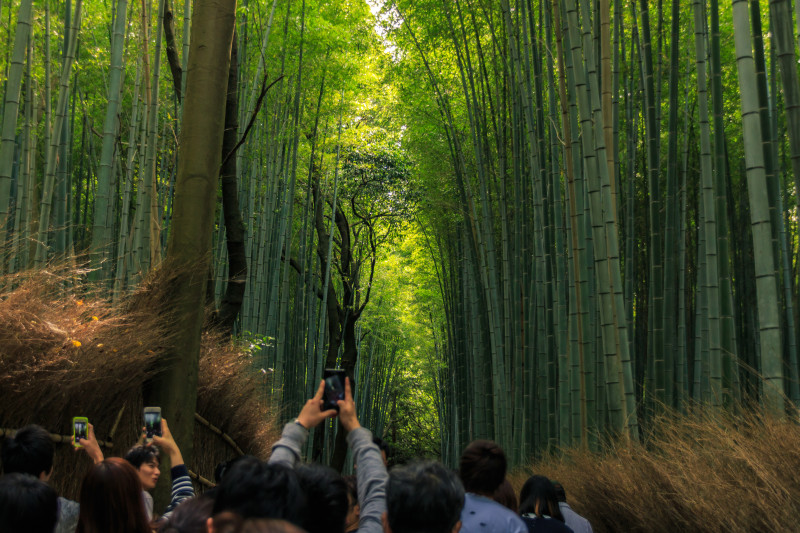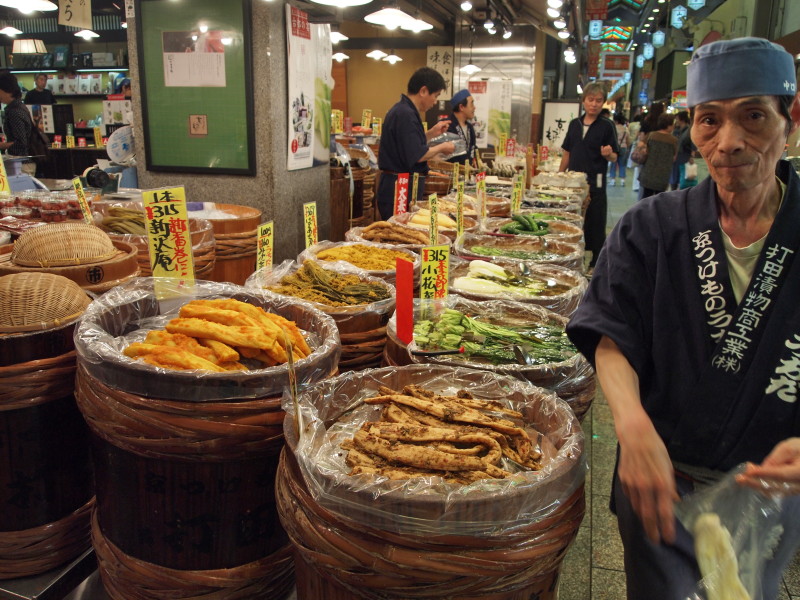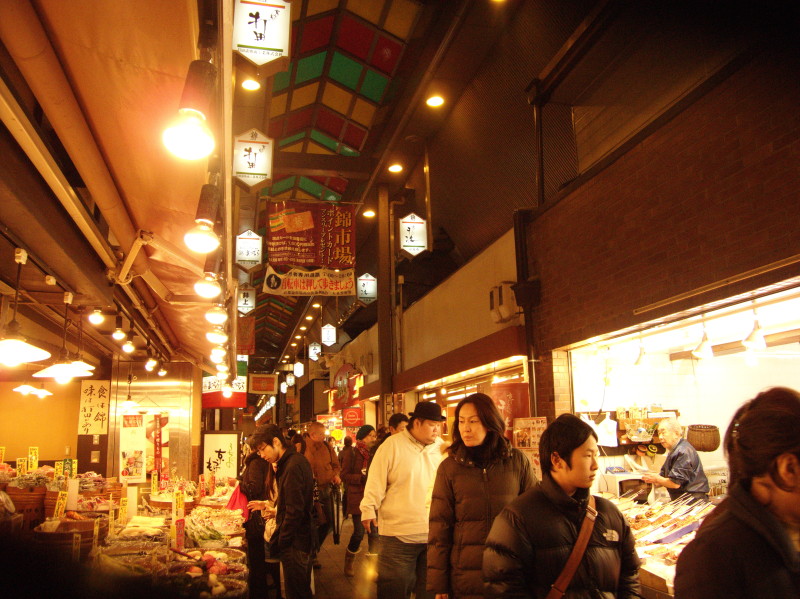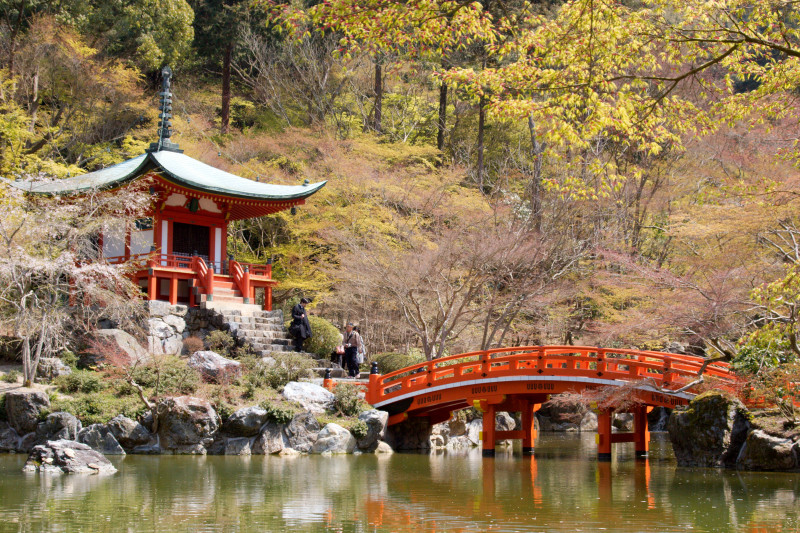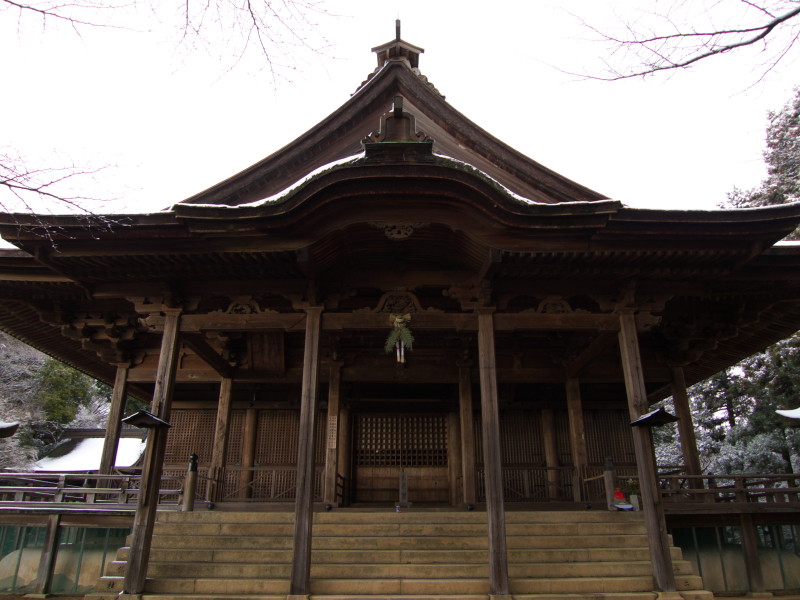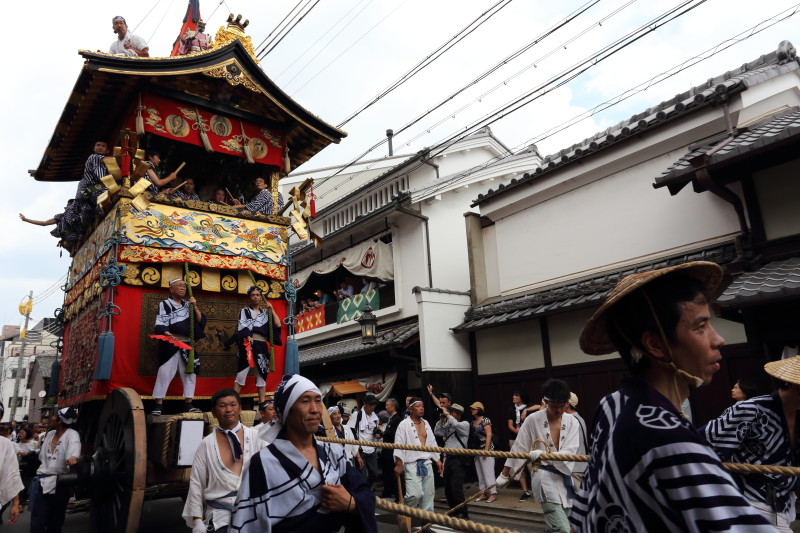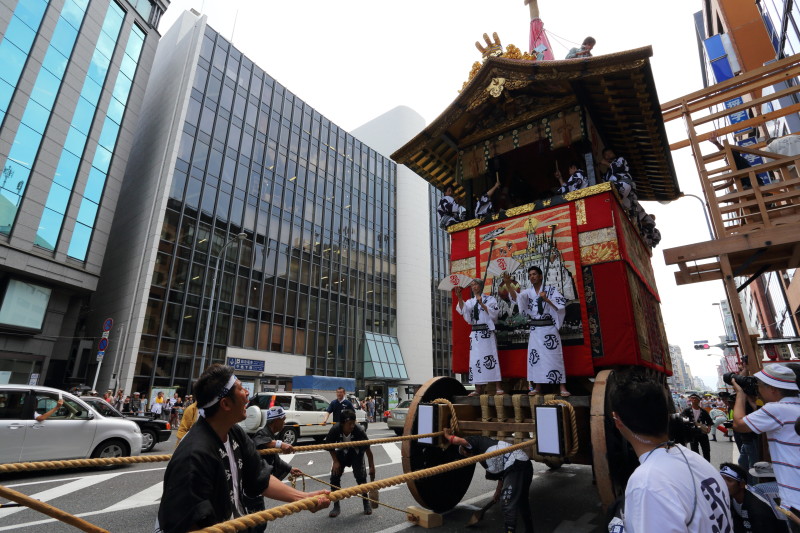Modern Japan is always associated with contemporary lifestyle and extreme high tech living, which indeed it is in all its ultra-urban megacities such as Tokyo, Osaka and Kobe. Yet at the same time, there is another dimension to modern Japan, the well preserved and carefully reconstructed ancient sites which used to be Japan most magnificent attractions hundreds of years ago. Those places are located all over Japan but there is no better place then Kyoto, the old capital of Japan, to see how such harmony between modern and old has settled in Japan comfortably. It is also a chance to get away from the ultra-modern Japan and enjoy a sort of a time travel to Japan culture and lifestyle in it’s utmost beauty.
The best way to get into Kyoto
Although Kyoto can be reached by car, plane or train, my personal favorite way to reach the city is by the Shinkansen bullet train. The ride from Tokyo to Kyoto takes you out of the mega-city and into the rural beauty of Japan’s countryside and then, in no time, you will find yourself in Kyoto Station, right in the heart of Japan’s most traditional of all cities. Once in Kyoto, get yourself ready for a trip of a lifetime. The list below offers the 10 most exquisite places to see in Kyoto. Take your pick and enjoy the Kyoto most unique atmosphere!
1.Tofuku-ji Buddhist Temple and its magnificent Hojo Zen Garden
Brief history of Tofuku-ji Temple
Founded in 1236, Tofuku-ji temple is the largest and most important of all Five Great Zen temples in Kyoto area. Although the temple was burned completely around the end of the 14th century, it has been rebuilt to match the exact original design of its creator, the Buddhist monk Enni Ben.
The Hojo Garden in Tofuku-ji Temple
In it’s original layout design, the temple Hojo (Head Priest Building) was surrounded from all four directions in designed gardens. In the early 20th century, the Japanese famous garden designer Mirei Shigemori redesigned the gardens to give them a contemporary flare. The garden final design is a classic example of the Shoin architectural style which was popular in medieval Japan and portray the Zen concept of man and nature coexistence in serene harmony.
Information
- Name: Tofuku-ji Buddhist Temple
- Address: 15-778 Hommachi, Higashiyama-ku, Kyoto
- Price: ¥400
- Access: Kyoto Bus #6 or #16 in Shijo-Karasuma Station. Get off at Tofukuji bus stop.
- Opening hour:
April – October: 9am – 4:30pm
November – Early December: 8:30am – 4:30pm
Mid December – March: 9am – 4pm- Website: http://www.tofukuji.jp/english
2.Hall of the Lotus King in Sanjusangen-do Temple
Brief history of Sanjusangen-do Temple
Sanjusangen-do Temple was built in 1164 and is most famous for the 1001 wooden carved life-size armed statues of Kannon – the Buddhist Goddess of Mercy. The Thousand Armed Kannon is located within the temple Hall of the Lotus king in 10 rows and 50 columns in front of the main Kanon statue.
What are those 1001 statues represent?
There is a deeper meaning to the special arrangement of the statues in the Lotus King Hall one should contemplate when visiting this special hall. The Buddhism concept for the special statue arrangement showcase the Kannon statue with 11 heads to better see the suffering of humanity. The 1000 arms are symbolizing the many hands to help humanity fight the suffering.
Information
- Name: Sanjusangen-do Temple
- Address: 657 Sanjusangendomawari, Higashiyama Ward, Kyoto, Kyoto Prefecture 605-0941
- Price: ¥600
- Access: Kyoto Bus #100, #206 or #208 in Kyoto Station. Get off at Hakubutsukan-Sanjusangendo-mae bus stop.
- Opening hour:
April 1 – November 15: 8am – 5pm
November 16 – March 31 – 9am – 4pm- Website: http://sanjusangendo.jp
3.Shugakuin Imperial Villa & Surrounding Gardens
Brief history of Shugakuin Imperial Villa
Located deep within the lush hills of eastern Kyoto is a complex of gardens and teahouses called The Shugakuin Imperial Villa. The garden complex was built by Emperor Go-Mizunoo in the 16th century and is considered is one of ancient Japan’s gardening masterpieces and it is managed today by the imperial Household Agency. The garden is considered to be one of the most beautiful places in Kyoto to enjoy the changing leaves colors in Autumn.
Explore all three gardens in the Shugakuin complex
The complex is divided to three garden villas areas which are linked with walkways and dotted with beautiful ponds. The walk around the gardens offers a great view of Kyoto city from the distance.
Information
- Name: Shugakuin Imperial Villa
- Address: Shugakuin Yabusoe, Sakyo Ward, Kyoto, Kyoto Prefecture 606-8052
- Price: Free (with visiting application only at the Imperial Household Agency)
Application Website: http://sankan.kunaicho.go.jp/order/index_EN.html- Access: From Kyoto Station take the JR Nara Line and get off at Tofukuji Station. Switch to the Keihan Line and get off at Demachiyanagi Station. Switch to the Eizan Railways and get off at Shugakuin Station.
- Opening hour: 9am – 3pm (5 tours per day / 9am / 10am / 11am / 1:30pm/ 3pm)
- Holiday: Sunday / Japanese National Holidays
- Website: http://sankan.kunaicho.go.jp/english/guide/shugakuin.html
4.Visit Gion district – Kyoto’s entertainment and Geisha quarter
Gion district, located along the eastern bank of the Kamo-gawa river is Kyoto’s entertainment and geisha neighborhood. The district originated in the 18th century as Kyoto pleasure district, it has nowadays turn into a geisha teahouses area offering a place to relax and enjoy on the way to or from Yasaka-jinja.
The nightlife of Gion district is unforgettable
Gion district is a beautiful place to talk a walk on throughout the day. You can walk up the street and all the way into Yasaka Jinja and enjoy the historic architecture and traditional look of the area. But the district turn into a whole new place at nights. As evening draws near, the geisha teahouses lanterns and the many geishas walking up and down the street in full kimono dress is what most people remember of Gion. It is the most authentic place in Japan to enjoy that very special kind of entertainment!
Information
- Name: Gion District
- Address: Gion District, Kyoto
- Access: Take Kyoto bus #100 or #206 and get off at Gion bus stop.
- Opening hour: 24 hours
5.Discover Kinkaku-ji Temple Golden Pavilion
Brief history of Kinkaku-ji Temple
The temple was originally built in 1397 by Shogun Ashikaga Yoshimitsu as a retirement house, and then converted into a Buddhist temple complex. The temple was built in a lavish aristocratic style of Shogun Yoshimitsu’s rule. The original temple was burned completely in 1950 and reconstructed back to its original form in 1955.
Kinkaku-ji Temple Golden Pavilion
When imagining Japan’s classic Buddhist temples, Kinkaku-ji is one of Japan’s most famous ones. The temple is built in front of a man made pond and covered with shining gold leaves. The reflection of the temple on a bright sunny or snowy day is breathtaking. The temple is one of the most popular buildings in Kyoto and attracting a large number of visitors daily but it is well worth the time and offers the picture perfect shot of Kyoto ancient temples.
Information
- Name: Kinkaku-ji Temple
- Address: 1 Kinkakujicho, Kita Ward, Kyoto, Kyoto Prefecture 603-8361
- Price: ¥400
- Access: Take the Kyoto City bus #101 or #205 from Kyoto Station and get off at Kinkaku-ji bus stop.
- Opening hour: 9am – 5pm
- Website: http://www.shokoku-ji.jp/k_about.html
6.Discover Enko-ji Temple underground Zen water Koto cave!
Brief history of Enko-ji Temple
Enko-ji temple is located at the base of Mount Hiei at the very north tip of Kyoto and very close to Shugakuin Imperial Villa. The temple was built by Shogun Tokugawa Ieyasu in 1601 as a temple to promote Buddhism scholarship in Kyoto area. The temple is considered as one of the most influential schools which contributed to the Japanese culture and produced many famous scholars and artists alike.
What is that beautiful sounds you can hear echoing?
Right as you enter the temple grounds, you can expect to experience one of the most ancient musical instruments created in Japan, the Sui-kin-lutsu! As you get close to the temple water basin to purify yourself by washing of hands and rinsing of the mouth you will hear a beautiful sound all around you. The sound comes from Enkoji Temple water basin which is built as a Sui-kin-kutsu musical instrument. The instrument is actually a buried metal pot with a hole at the top. Water drips through the hole at the top onto a small pool of water inside of the pot, creating a magnificent splashing sound!
Information
- Name: Enko-ji Temple
- Address: 13 Ichijojikotani-cho, Sakyo-ku, Kyoto
- Price: ¥500
- Access: Take the Eiden Railways train to Ichijoji Station
- Opening hour: 9am – 5pm
- Website: http://www.enkouji.jp
7.Enjoy a walk in Arashiyama bamboo grove
A special atmosphere walk within a bamboo grove!
If you wish to come out from Kyoto center and enjoy one of the most magnificent natural wonders you can find in the area, then don’t miss the scenic view of Arashiyama bamboo grove. Arashiyama is located on the western outskirts of Kyoto. It is a very popular leisure and relaxing area since the ancient Heian period when Japan7s aristocracy and noblemen used to walk the area to appreciate the natural beauty and the special atmosphere the place has to offer.
The access to the bamboo grove is from Arashiyama main street where you can also see the Tenryu-ji temple entrance. Simply walk into the temple and exit at the north gate to enter the majestic grove where you will find one long path which you can walk up the small hill, ending at the Okachi-sanso Villa at the top of the hill.
Information
- Name: Arashiyama Bamboo Grove
- Address: Arashiyama, Ukyo-ku
- Price: Free
- Access: Take the JR Sagano Line and get off at Saga Arashiyama Station
- Opening hour: 24 hours
8.Explore Nishiki food market in downtown Kyoto
Foodies and restaurant owners both love Nishiki market!
Nishiki market is Kyoto oldest food market and exist for hundreds of years at the center of Kyoto.
This market is offering any type of food one can imagine in unbeatable prices. The market is serving two types of customers at any given day. The first kind is the professional chefs and restaurant owners who are in need of fresh ingredients for their kitchens. The other kind of market visitors are a growing crowds of tourists and foodies alike who love to see the market massive variety of fresh food, the great discounts you can get in the market, and the overall atmosphere the market offer its visitors.
If you are in Tokyo area and have a couple of hours to spend, don’t miss this opportunity to see this very special food lovers market!
Information
- Name: Nishiki Market
- Address: Nishikikoji-dori, Nakagyō-ku, Kyoto (Between Teramachi & Takakura)
- Price: Free
- Access: Take the Karasuma Subway Line and get off at Shijo Station
- Opening hour: 9am – 5pm
9.Check out Kyoto World Heritage site; Daigo-ji Temple!
Explore the full mountain side of Daigo-ji Temple
Daigo-ji Temple is situated at Kyoto southeast edge and the full temple complex includes the entire Kamidaigo Mountain. The temple was built in 874 and in 2004 has been designated as UNESCO World Heritage Site.The temple area encompass three large areas called Sambo-in (Garden Area), Shimo-daigo (Lower Temple Area) and Kami-Daigo (Upper Mountain Area). The garden and lower temple areas are located at the bottom of the mountainside, but to get to the upper mountain area, visitors need to climb up a steep path to the top of the mountain to see the Kami-daigo shrine at the summit. Exploring the whole Daigo-ji temple is a great full day experience!
Information
- Name: Daigo-ji Temple
- Address: 22 Daigohigashiojicho, Fushimi Ward, Kyoto, Kyoto Prefecture 601-1325
- Price: ¥600
- Access: Take the Tozai Subway line and get off at Daigo Station.
- Opening hour: 9am-4pm
- Website: http://www.daigoji.or.jp/index_e.html
10.Join Kyoto Summer Gion Festival
The biggest summer festival in Kyoto
Every summer the Gion Festival become to city focal point for both locals and tourists. Ion festival is one of the most famous festivals in Japan and for a good reason! The festival activities continue for the entire month of July and is ending with two huge parades called “Yamaboko Junko“. The festival origin over 1000 years ago. In ancient Japan, the festival was conducted to protect Kyoto people from summer diseases and to drive away any evil spirit that brought the summer sickness with them. In modern Japan, the festival is simply a reason to celebrate Japan culture with massive size floats that are been carried around the Gion district and watched by thousands of locals and tourists alike.
Information
- Name: Gion Matsuri
- Address: Gion District, Kyoto
- Price: Free
- Website: http://www.jnto.go.jp/eng/location/spot/festival/gion.html
Have a good trip and travel!
